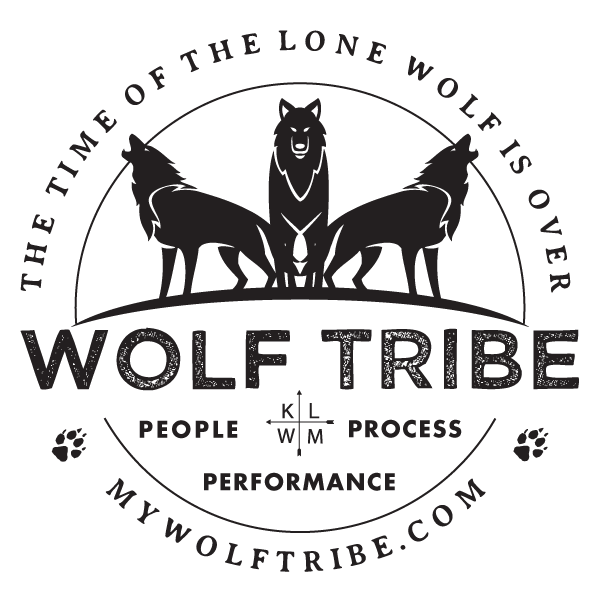Step 12 Up the Tribe Triangle: Leadership is The Act of Creating a Future that Does Not Currently Exist
lead·er·ship
/ˈlēdərˌSHip/
noun
The action of leading a group of people or organization.
“Leadership is action not position.”
-Donald McGannon
Leadership is the beating heart of culture and regardless of your title in the org chart or your current job description, you are the head of culture before you are anything else. What you DO literally creates culture because culture is simply the collective beliefs and behaviors of your people. Your kids aren’t listening to you, they are watching you. The same is true for your employees, co-workers, clients and bosses. You are what you do.
This reality places leadership development as the primary function and source of creating and maintaining your Tribe Triangle foundation of alignment. Numerous studies have shown that on average most people are promoted into leadership positions in their early 30s but don’t receive any formal leadership training until their early 40’s. This leads to a 10 year steep learning curve of on-the-job training that leaves a wake of collateral damage and debris in both your people and projects.
There are many forms and styles of leadership but all of them start with self-leadership. This is where all leadership begins and ends. You can only take a team, family or organization as far as you yourself have gone. Let’s take another step on that ongoing journey now!
Firstly, there is a fundamental difference between leaders and managers. Both are vital to the ongoing success of your tribe and you may be forced to play both these roles often at the same time. Understanding this distinction will be key to your people and project success.
Leaders are people who can see and create an aspirational future that does not currently exist. This is why vision, inspiration and innovation are such central core competencies of leaders. Remember, Napoleon called leaders “dealers in hope.”
Managers are people who drive and maintain what currently exists. They put out fires and do the heavy work of implementing the heavy lift of keeping the wheels turning.
Both of these functions are indispensable for families and work teams and because they are often roles that must be played by the same person (you) you must realize how and when to switch hats. Too much time visioning what could be and nothing gets done. Too much time spent in managing what is leads to lack of vitality and eminent decay.
How do we know when and where to play these two roles? A great exercise is a prioritization matrix or the Eisenhower box. This is a simple 2x2 grid with the two axis being urgent and important.
Remake this grid on a sheet of paper and put as many of your weekly activities as you can into the appropriate boxes. Do this with your tribe!
Leadership activities are in quadrant 2 (important but not urgent).
Management activities are in quadrant 1 (urgent and important.)
Activities in quadrant 3 (urgent but not as important) you should delegate if possible.
Activities in quadrant 4 (not urgent and not important) you should kill. This is also a leadership function.
You will notice that quadrant 3 which is the less important things that you should be delegating gets regularly pushed up to quadrant 1 after they become urgent. The ability to delegate these projects hinges on not only your ability to see and assign those duties, but also the ability of your team to understand and implement them.
This is another vital component to the leadership journey which is the fact that the best leaders create other leaders. Have you gathered and trained a group of people who are capable of managing?
Do they understand and buy into the vision that you are all traveling towards?
Do they understand and operate by your shared values so the decisions, actions and projects are done in alignment with those values?
Do they practice the mission protocol of transparency, collaboration and reciprocityso you can confidently delegate missions to them?
Leadership development is the real-world implementation and application of psychology, philosophy, ethics and even anthropology (which is the study of humans). Leadership development is transforming and integrating the information of the world into practical wisdom for the world.
You deserve this journey.
Your people and projects demand it.
Click here to watch the video of Step 12: Leadership Is The Act of Creating A Future That Does Not Currently Exist
Leaders Must Write and Speak
Answer these questions in your journal by really writing them down. Discuss them with at least one of your most important people and really listen to their response.
Are you optimistically holding and sharing your VISION for the future?
When was the last time you shared or reaffirmed your tribe’s Shared Vision?
Who needs to hear it again this week?
Are your actions in alignment with your stated core VALUES?
When was one time you made a sacrifice to stay value-aligned?
When was one time you recently made an out-of-value-aligned action?
Are you conducting your MISSION in a shared manner?
Have you modeled transparency by sharing what you are working on this week?
Have you modeled transparency by asking for help with that mission this week?
What is one project that you can delegate to your people to manage that will liberate you to lead your team toward your shared vision?
Ubuntu,
Philip Folsom







